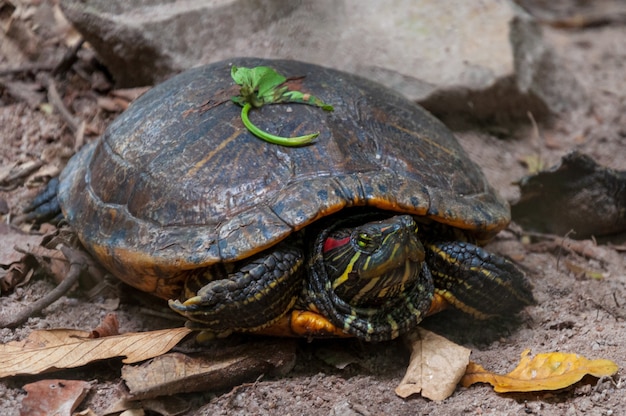

The Galapagos Islands are a treasure trove of unique wildlife.
These islands are located in the Pacific Ocean, about 600 miles off the coast of Ecuador.
The Galapagos Islands are known for inspiring Charles Darwin’s theory of evolution.
The archipelago consists of 18 main islands and several smaller ones.
The Galapagos Islands are home to an astounding variety of animal species, many of which are found nowhere else on Earth.
The islands’ unique ecosystem and isolated location have led to the evolution of distinct animal and plant species.
Giant tortoises are among the most iconic residents of the Galapagos Islands.
There are 13 species of Darwin’s finches on the islands, each with different beak shapes adapted for different diets.
The marine iguana is the only lizard in the world that can swim in the ocean.
The islands are a paradise for birdwatchers, with over 56 bird species, including the famous blue-footed booby and flightless cormorant.
The Galapagos penguin is the only penguin species found north of the equator.
The islands are a UNESCO World Heritage Site due to their exceptional biodiversity.
Santa Cruz Island is home to the Charles Darwin Research Station, where scientists study the islands’ unique ecosystem.
The islands’ volcanic origin is evident in their dramatic landscapes, with rugged coastlines, volcanic peaks, and lava fields.
The Galapagos Islands are a popular destination for snorkeling and scuba diving due to their clear waters and diverse marine life.
The islands are a sanctuary for the endangered Galapagos giant tortoise, whose populations were once near extinction.
The islands’ marine reserve is among the largest in the world, protecting the diverse array of marine species.
The Galapagos Islands are a living laboratory for scientists studying natural selection and adaptation.
The archipelago is located at the intersection of several ocean currents, creating a unique mix of marine life.
The islands’ isolation has made them a haven for endemic species, found nowhere else on Earth.
Some of the rarest seabirds, such as the waved albatross, breed exclusively on the Galapagos Islands.
The islands played a vital role in shaping Darwin’s theory of natural selection, as he observed distinct adaptations in the finches and other animals.
The Galapagos Islands are named after the giant tortoises living there, as galapago means tortoise in Spanish.
The islands have strict visitor regulations to protect their delicate ecosystem and limit human impact.
Tourism is carefully managed in the Galapagos Islands to prevent overcrowding and preserve the natural beauty.
The volcanic activity on the islands has led to the formation of unique geological formations, such as lava tunnels and craters.
The Galapagos fur seal is one of the smallest seal species in the world.
The islands offer a range of outdoor activities, including hiking, kayaking, and wildlife cruises.
The Galapagos green turtle is one of the largest species of sea turtles in the world.
The islands’ unique wildlife includes the Galapagos land iguana, which can reach lengths of up to 5 feet.
The marine reserve surrounding the islands is a popular spot for snorkelers to swim with sea turtles, dolphins, and colorful fish.
The Galapagos hawk is the islands’ only native land bird of prey.
The islands’ volcanic ash has created fertile soil, allowing unique plant species to flourish.
The Galapagos Islands were declared a national park in 1959 to protect their natural heritage.
The famous Darwin’s Arch rock formation is a popular diving spot and a symbol of the islands’ scientific significance.
The islands have been used as a filming location for several documentaries and movies, showcasing their beauty to a global audience.
The Galapagos Islands are home to the world’s smallest species of penguin, the Galapagos penguin.
The Galapagos sea lion is a playful and curious creature, often seen lounging on the islands’ beaches.
The islands’ volcanic activity is monitored closely to ensure the safety of both wildlife and human inhabitants.
The islands’ stunning landscapes and unique wildlife have inspired countless artists and writers over the years.
The Galapagos Islands offer a glimpse into the Earth’s past, with many species resembling those found millions of years ago.
The islands are a prime location for whale watching, with multiple species, such as humpback and pilot whales, passing through their waters.
The Galapagos Islands have a rich cultural history, with indigenous groups inhabiting the islands long before the arrival of Europeans.
The islands’ beaches are nesting sites for several species of sea turtles, including the endangered green sea turtle.
The Galapagos Islands serve as a reminder of the delicate interplay between humans and the natural world, highlighting the importance of conservation efforts.
Around the world, coffee enthusiasts enjoy Monin coffee concentrate since it is a multipurpose product. Conveniently combining…
The Importance of Choosing the Right Shower for Your Bathroom Renovating your bathroom can be…
Usain Bolt holds the record for the fastest 100-meter sprint in history.Bolt was named Sportsman…
Love is in the air... and it smells suspiciously like chocolate!Roses are red, violets are…
Life's a beach, take a picture and relax.Sun, sand, and salty kisses. That's what beach…
Hungary is home to the largest thermal water cave system in the world.The Rubik's Cube…